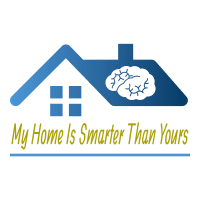Building a smart home can seem like a daunting task, but with the right guidance, it can be an exciting and rewarding experience. To help you get started, let’s break down the basic building blocks of a smart home: communication methods, devices to control, controllers, and input devices. By understanding these components, you can create a cohesive and efficient smart home system.
Communication Methods
First and foremost, every smart home requires a communication method for all the devices to interact seamlessly. This communication can be established through various networks:
- Wireless Networks: Wi-Fi, Zigbee, and Z-Wave are popular wireless communication methods. They allow devices to connect without the need for extensive wiring, offering flexibility in placement and installation. Wi-Fi is ubiquitous and easy to set up, while Zigbee and Z-Wave are known for their low power consumption and reliable mesh networking capabilities.
- Wired Networks: Ethernet cables provide a stable and fast connection for devices that require consistent performance, such as security cameras and media servers. Wired connections are less susceptible to interference and can handle higher data loads, making them ideal for high-bandwidth applications.
- Dedicated Smart Home Device Wiring: Some smart homes use specialized wiring systems designed explicitly for home automation. This can include proprietary systems or standards like KNX, which provide robust and scalable solutions for large and complex installations.
- Internet Communications: Cloud-based services like Alexa and Google Home rely on internet connectivity to control and manage smart home devices remotely. These services offer convenience and remote access, allowing you to control your home from anywhere in the world.
Therefore, choosing the right communication method depends on your home’s infrastructure and the devices you plan to integrate. A combination of wireless and wired networks often provides the best balance of flexibility and performance.
Devices to Control
The heart of any smart home is the devices you choose to control. Fortunately, there is an endless array of smart devices available, including:
- Smart Light Bulbs and Switches: Control lighting to set the perfect ambiance and save energy. Smart bulbs can change color and brightness, while smart switches offer more control over traditional lighting fixtures.
- Smart Thermostats: Optimize your home’s heating and cooling for comfort and energy efficiency. These devices learn your schedule and preferences, adjusting the temperature automatically to save energy when you’re away and keep you comfortable when you’re home.
- Smart Plugs and Outlets: Turn traditional appliances into smart devices with remote control capabilities. Smart plugs can be used to control lamps, fans, and other small appliances, while smart outlets offer more integrated solutions for larger devices.
- Smart Security Systems: Enhance home security with smart locks, cameras, and motion sensors. These systems provide real-time alerts and remote access, allowing you to monitor and control your home security from anywhere.
- Smart Sprinkler Controllers: Automate lawn and garden irrigation to conserve water. These controllers use weather data and soil moisture sensors to optimize watering schedules, ensuring your plants get the right amount of water without waste.
- Smart Home Entertainment Systems: Streamline control of your TV, speakers, and streaming devices for an integrated media experience. These systems allow you to control all your entertainment devices from a single remote or app, making it easy to enjoy your favorite content.
By selecting devices that meet your needs and lifestyle, you can create a smart home that simplifies daily tasks and enhances your living environment.
Controllers
Next, let’s discuss controllers. Controllers are the brains of your smart home system, sending signals to your devices and managing their operations. Controllers can be:
- Smartphones and Tablets: Use apps to control and monitor your smart home devices from anywhere. These devices provide a convenient and familiar interface for managing your smart home, with many apps offering advanced features like automation and remote access.
- Dedicated Smart Home Controllers: Devices like the Hubitat Elevation or Samsung SmartThings Hub offer centralized control and advanced automation. They integrate devices from multiple manufacturers for a cohesive smart home experience.
- Voice Assistants: Amazon Alexa, Google Assistant, and Apple Siri provide hands-free control through voice commands. Voice assistants are becoming increasingly popular due to their convenience and ease of use, allowing you to control your smart home without needing to pick up a device.
- Computers: Some smart home systems allow control through web interfaces, offering robust management options. These interfaces often provide advanced features like detailed automation rules and integration with other smart home platforms.
Thus, choosing the right controller depends on your preference for convenience, integration, and ease of use.
Input Devices
Now, let’s look at input devices. Input devices are how you interact with your smart home. They include:
- Remote Controls: Simple and easy-to-use remotes for controlling basic functions like lighting and media. These devices provide a familiar interface for controlling your smart home and are often the most convenient option for quick adjustments.
- Touch Panels and Keypads: Wall-mounted interfaces that provide centralized control for multiple devices. Touch panels and keypads offer a more integrated solution for managing your smart home. Many devices provide customizable interfaces and advanced control options.
- Smartphones and Tablets: Versatile devices that offer control through apps and provide mobile access to your smart home. These devices are often the primary interface for managing your smart home. Many available apps offer advanced features like automation and remote access.
- Voice Control: Voice assistants like Alexa and Google Home allow you to control your home with spoken commands. Voice control is popular due to its convenience, allowing you to control your smart home without picking up a device.
Therefore, selecting the appropriate input devices ensures that interacting with your smart home is intuitive and convenient for all household members.
Building Your Smart Home
To start building your smart home, you need at least one device from each of the categories above: a communication method, devices to control, a controller, and an input device. Here’s a step-by-step guide to help you get started:
- Assess Your Needs: Determine which areas of your home you want to automate. Consider lighting, security, climate control, and entertainment.
- Choose Your Communication Method: Decide whether you prefer wireless, wired, or a combination of both. Wireless networks offer flexibility and ease of installation, while wired networks provide stability and high performance.
- Select Your Devices: Pick the smart devices that best meet your needs. Start with a few key devices and expand as you become more comfortable with your system.
- Pick Your Controller: Choose a controller that integrates well with your chosen devices and offers the features you need. Consider factors like ease of use, compatibility with different devices, and advanced automation capabilities.
- Install Input Devices: Set up your input devices in convenient locations to ensure easy access and control. Consider placing touch panels and keypads in central locations and using voice assistants in frequently used rooms.
Tips for Success
Furthermore, to ensure a smooth setup, follow these tips:
- Start Small: Begin with a few devices and gradually expand your system as you become more familiar with smart home technology. This approach allows you to learn the basics and build confidence before tackling more complex installations.
- Ensure Compatibility: Verify that your devices are compatible with your chosen controller and communication method. Check manufacturer websites and user reviews for compatibility information and potential issues.
- Plan for the Future: Consider your long-term goals for home automation and choose scalable solutions. Think about how you might expand your system in the future and select devices and controllers that can grow with your needs.
- Stay Updated: Follow smart home blogs and forums to stay informed about new products and best practices. Join online communities to share experiences, ask questions, and get advice from other smart home enthusiasts.
Conclusion
In conclusion, building a smart home starts with understanding the basics: communication methods, devices, controllers, and input devices. By selecting and integrating these components, you can enhance your daily life, improve security, and increase energy efficiency.Happy smart homing!


No responses yet